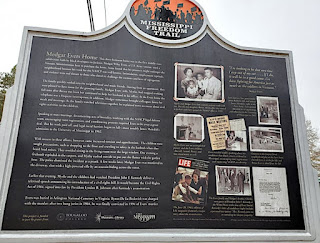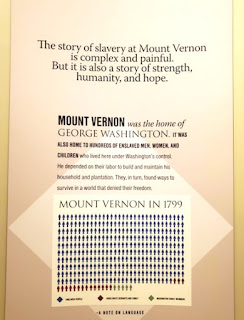The first recorded European explorer to reach Mississippi was De Soto in 1540. At the time Native Americans had been living there for 12,000-years and three indigenous tribes had the largest presence, the Chickasaw, Choctaw and Natchez. It was Indians who gave the river and the state its name as the “Father of Waters”, “Misi-ziibi". The native inhabitants were displaced through unfair treaties and oppression and in 1719 the French introduced a significant number of slaves into the area. visitmississippi.org
Jackson, Mississippi’s capital, sits in the central portion of the state on the Pearl River. A French trading post was established there in 1792. By 1798 the territory had 4,500 whites and 2,400 blacks. Thirty years later a treaty allowed white settlement, 2-years later it was named after Andrew Jackson and it became the location of the state capital in 1821 because of its proximity to the Pearl River and the Natchez Trace.
When Mississippi achieved statehood in 1817 it led the country in cotton production because of their “Petit Gulf” cotton. They produced as much as 3,000-lbs per acre when the average was 530-lbs. Increased production demanded an increased number of enslaved and by the 1830s there were 200,000 slaves, outnumbering the number of whites. At the onset of the Civil War there were 353,901 whites and 436,631 slaves. Because of the ever-present fear of insurrection the slave laws were particularly harsh and the number of enslaved who were freed was held to a minimum. In 1857 a law was enacted making private emancipations illegal. The enslaved always practiced subtle resistance by working slowly, breaking tools, feigning sickness, etc.
At the start of the Civil War slavery was legal in 5 of the county’s 10 richest states and there were a total of 3,953,760 enslaved workers worth around 43-billion. Mississippi seceded from the Union on January 9, 1861. During the war it changed hands 9 times and suffered significant damage and a July 1864 raid consisted of Federal units including a black cavalry regiment.
National Archives Photos
The state sent approximately 80,000 white men into the war. Black “Confederates” were issued a pension by Mississippi even though there were no black combat troops, highlighted by the fact that it was not until March 13, 1865 that the Confederate Congress enacted a law permitting black men to serve in combat but, ”nothing in this act shall be construed to authorize a change in the relation which the said slaves shall bear toward their owners”. Blacks served as noncombatant laborers, aid workers, factory workers, transporters of goods and personal servants to troops.
The Jackson Civil Rights Movement Driving Tour consists of 80-sites over 4 neighborhoods. It includes homes, churches, schools and event locations with 11 designated Freedom Markers. It begins in the 19th-century 125-acre Farish Street Historic District, once Mississippi’s “Black Mecca,” at one of CNN’s 50 States 50 Spots to see, the Smith Robertson Museum and Cultural Center. More than 1,000 artifacts are housed here, the city’s first public school for black children.
Tougaloo College was both a haven and a place to organize for movement members. The college was founded in 1869 on what was the Boddie Plantation. All of the great leaders, Hamer, Baldwin, King, Evers, Bond, R. Kennedy, Bunche, Baez and Rustin spoke from the podium in Woodworth Chapel. Students departed from Woodworth to stage a read-in in Jackson Public Library in 1961 where they were arrested. Cleman Library houses important Civil Rights documents.
A life-sized statue of Medgar Evers stands in front of the Medgar Evers Library a ½-mile from M
edgar Evers Home Museum. He purchased the house with a GI loan in 1957 and was assassinated here on June 12, 1963. The activist and NAACP Field Secretary arrived home at 12:20 AM after attending a meeting at the New Jerusalem Baptist Church. Byron De La Beckwith shot him from a honeysuckle bush 150-ft. away with a 1918 Enfield rifle. He died one hour later. Services were held at Collins Funeral Home.
Twelve Mississippi Blues Trail Markers are placed around the city in recognition of the city’s contributions to music. The 1949 Art Deco Alamo Theater, part of the “Chitlin Circuit”, is featured. It presented black films and performers. It closed in 1983 and was restored and reopened in 1997. msbluestrail.org
The Museum of Mississippi History and the Mississippi Civil Rights Museum are situated adjacent to one another connected by a lobby. Together they present a complete picture of the state’s history through artifacts, dioramas, interactive displays, audio, video and informational panels.
The Museum of History presents more than 15,000 years of habitation through three chronological galleries on two floors. The exhibit areas are, 13,000 BC-AD 1798, 1799-1865-Shaping A State and 1866- Present- Remaking Society. Highlights of the museum are a 500-year-old dugout canoe and an in-depth exploration of the Cotton Kingdom and 19th-century slavery. The museum contains the world’s largest collection of Mississippi artifacts. mmh.mdah.ms.gov
The Mississippi Civil Rights Museum honors those who participated in the 1945-1970 Civil Rights Movement in eight interactive exhibits and I cannot recommend this museum highly enough. The museum guides you from the close of the Civil War to the current state in America. Galleries are built around an area, This Little Light of Mine, that honors the activists with music and features a light sculpture that increase in brightness as more people enter the area. Creative theaters are placed throughout the exhibits. Visitors can view videos in a church, a police van and a jail cell. Other highlights include films on Emmett Till, the slain Civil Rights workers and Medgar Evers. On display is the actual rifle used to assassinate Evers. The music of the movement plays during the tour. mcrm.mdah.ms.gov
You can practice COVID protocols while interacting with history. Stay safe and visit sites that matter.



























































